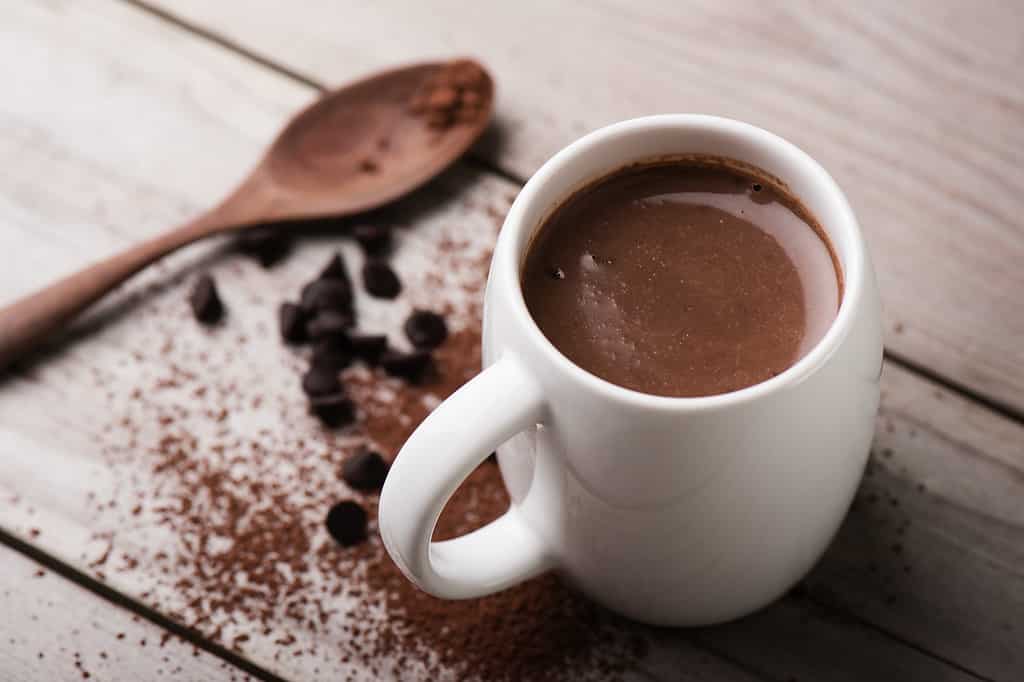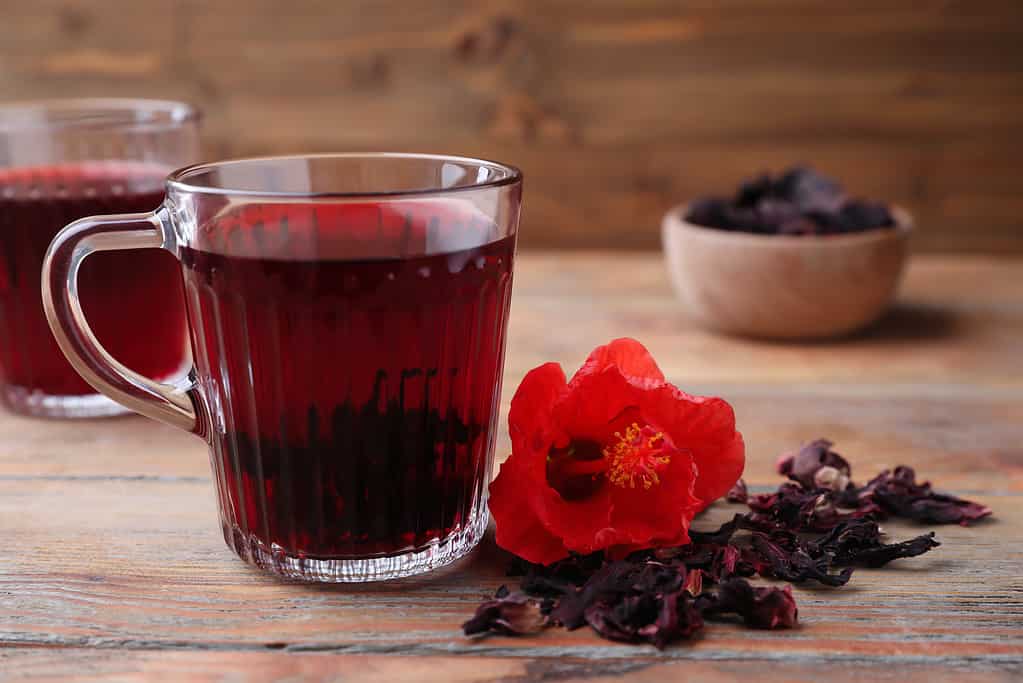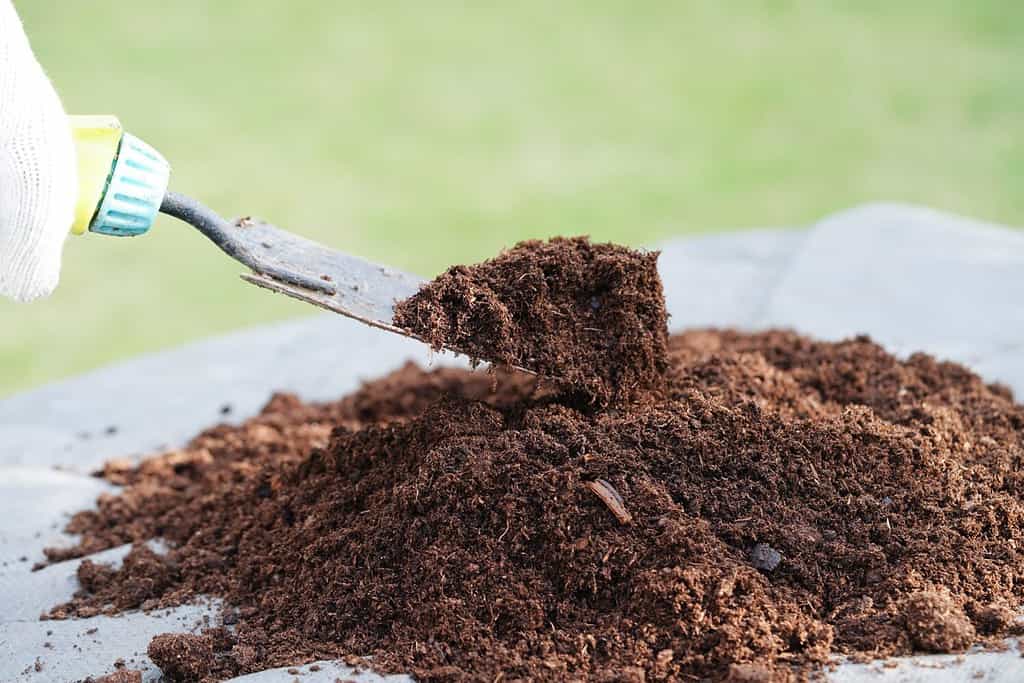
Red wine is high in tannins, but it’s not the only drink that has them.
©debyaho/iStock / Getty Images Plus via Getty Images
A tannin is a naturally occurring compound. Though it’s talked about most often in relation to wine, it’s found in all sorts of foods and drinks you have every day.
Tannins have a history of being used by people for tanning and restoring old pottery. To learn more about this interesting compound found throughout the world, you’ll want to keep reading.
What Are Tannins?
Tannins, also known as tannic acid, are a natural part of many plants. Those who drink wine may have heard that some wines are full of tannins. This is true, as grapes are one plant that is full of tannins in the skin, seeds, and stems. The wood that is used to age the wine may also have tannins.
Taste
Tannins tend to taste bitter and astringent. Their purpose in nature is to make something unpalatable to animals that may try to eat it. A lot of plants have tannins in their young plants and fruits to keep animals away.
If you have ever eaten a fruit that wasn’t quite ripe and you felt it suck the spit out of your mouth and leave it feeling dry and puckered, then you have experienced tannins before.
Defense
Even some full-sized plants have tannins as a defense. Trees use tannins as a defense in their bark to keep away their potential predators. Tannins can even be considered a pesticide because they do such a good job of keeping certain insects away.
How Humans Use Tannins
Oddly enough, some people make foods and drinks out of these bitter chemicals and find the food to be quite pleasant. Some of your favorite foods likely include tannins.
They aren’t always used for food, sometimes, you can take the tannins from plants to make leather and tan hides. People also use tannins to save antiques. It’s common with old pots such as iron teapots from Japan. Nowadays, people tend to use synthetic tannins as they are easier to produce and not dependent on crops, but tannins directly from plants were originally used.
There is a type of ink, known as iron gall ink, that also uses certain materials from tannins. Iron sulfate mixed with gall acid, derived from tannins, from oak trees, created a beautiful brown-black color that many artists used in their work including in the creation of Bibles, and works by Leonardo da Vinci. This black ink doesn’t fade, which is what made it so popular.
Tannins are also used as the basis for preserving food. It’s been long known that tannins have antimicrobial properties. More recently, it’s been found that tannins inhibit not only microbes, but also bacteria, fungi, yeast, and viruses.
Effects of Tannins in People

Chocolate and chocolate by-products have tannins that give it a bitter aftertaste.
©Norasit Kaewsai/iStock via Getty Images
Are tannins good or bad for you? There’s a lot of debate, and research so far isn’t helping.
A Lot of Debate
There is a lot of debate over the benefits of tannins in people. Some research has suggested that tannins are carcinogenic, and lead to an increased risk of esophageal cancer. However, that information doesn’t correlate with other research. Foods and drinks high in tannins tend to have a negative association with all forms of cancer. Tannins have also been found to reduce the number of mutations in cells, which is one of the causes of cancer. All of this simply means that more studies need to be done.
What is solidly known about tannic acid is that it changes our digestive system. It’s known to decrease how much people eat, but it also has been found to reduce how many nutrients can be digested, including protein.
Antioxidants
Tannins are also found to have antioxidant properties. Antioxidants are considered to be incredibly beneficial to people as they help to lower cholesterol and blood pressure. They also help to boost the immune system, fight tooth decay, and reduce signs of aging.
Misunderstandings
Many people are choosing to eat healthier foods in their daily lives. While this is a good goal, many influences that people listen to for what is good and bad to eat misunderstand tannins. They believe that they are bad and should be consumed as little as possible. This isn’t necessarily true, and more research needs to be done to confirm the exact properties of these compounds.
While there’s still some debate on how good or bad tannins are, they aren’t much worse or better than other foods you eat, so it’s fine to consume on occasion.
That is, as long as you can tolerate it. Some people are sensitive to tannins and can experience fierce headaches any time they try to eat or drink something with this compound.
What Has Tannins?

Grapes, which are used to make wine, are full of tannins.
Studies have found that hundreds of plants of every kind use tannins at some point during their life cycle.
Some of the foods and drinks that have tannins include:
- Grapes
- Tea
- Nuts
- Coffee
- Dark chocolate
- Rhubarb
- Pumpkin
- Squash
- Cranberry
- Pomegranates
- Strawberries
- Cloves
- Tarragon
- Vanilla
- Cinnamon
- Legumes
- Guava
- Beer
- Bananas
- Chestnut
If you’ve eaten some of these foods, especially when they weren’t ripe, you may have noticed a bitter aftertaste or your mouth feeling drier after you eat them. Chocolate, beer, and wine are all known for their slightly bitter, though not necessarily unpleasant, aftertaste.
Other plants that we don’t regularly eat, that contain tannic acid are:
These are just examples. Pretty much any plant you can think of has tannins at some point in its life. Some have more than others, to act as a layer of defense.
Tannins in Nature

Oak trees are full of tannins.
©Denton Rumsey/Shutterstock.com
Tannic acid isn’t only in plants and food. You can also find tannins naturally in soil and water. They have some positive benefits.
Soil
Tannins have an important role in soil. they help to break down and decompose dead and dying plants.
Scientists are starting to push for using tannins in agricultural soil. The way that tannins interact with other minerals can be very beneficial. For example, tannins immobilize metals, while also freeing up calcium to better help the crops.
Tannic acid is full of polyphenols, which helps with decomposition and the cycling of nitrogen. Plants with a waxy layer and lots of tannins decompose slower than other plants and also manage to keep away harmful microorganisms. Some scientists speculate that it may positively regulate carbon in the carbon cycle.
Water

If you come across natural water the color of this tea, these compounds are probably involved.
©New Africa/Shutterstock.com
If you’ve ever gone swimming in water in the south where the water is a deep reddish-brown, almost the color of over-brewed tea, you’ve probably come across tannins.
Tannins sit in the water and turn it all a deep red color naturally. Sometimes, the color stays all the time. Since this compound sits in the soil and decomposes plants, floods may make the water darker as a lot of the plants then ‘brew’ in the water. It’s very similar to making tea, just on a bigger scale and with not-so-tasty plants.
A lot of coniferous trees and flowering plants have tannins. Some of the tannins leach out of the plant and into the surrounding soil or water. Areas with a lot of plants and soil rich in tannins will have redder water.
Occasionally, well water gets tannins in it from decomposing materials in the water or surrounding soil. This will make the water look bad, as it will be a rusty-brown color. It may also change the flavor, making it taste bitter or smell bad, but it is completely healthy to drink.
Wood

Peat moss, often used in gardening, also has tannins in it.
©sweet_tomato/Shutterstock.com
You already know that some wood contains tannins. If you’ve ever used a raw piece of wood to put in an aquarium, you may have noticed that the water turns red after a while. The same will happen if you use peat.
To stop this from happening, you’ll have to boil the water several times until the water stops changing color. Or, you will need to use woods that don’t have these compounds that turn water red.
If you don’t want to go through the process of boiling wood over and over again before placing it in your aquarium, avoid woods that are naturally very red, yellow, and brown, such as cedar, redwood, and red oak.
The photo featured at the top of this post is © iStock.com/Popartic
Thank you for reading! Have some feedback for us? Contact the AZ Animals editorial team.







